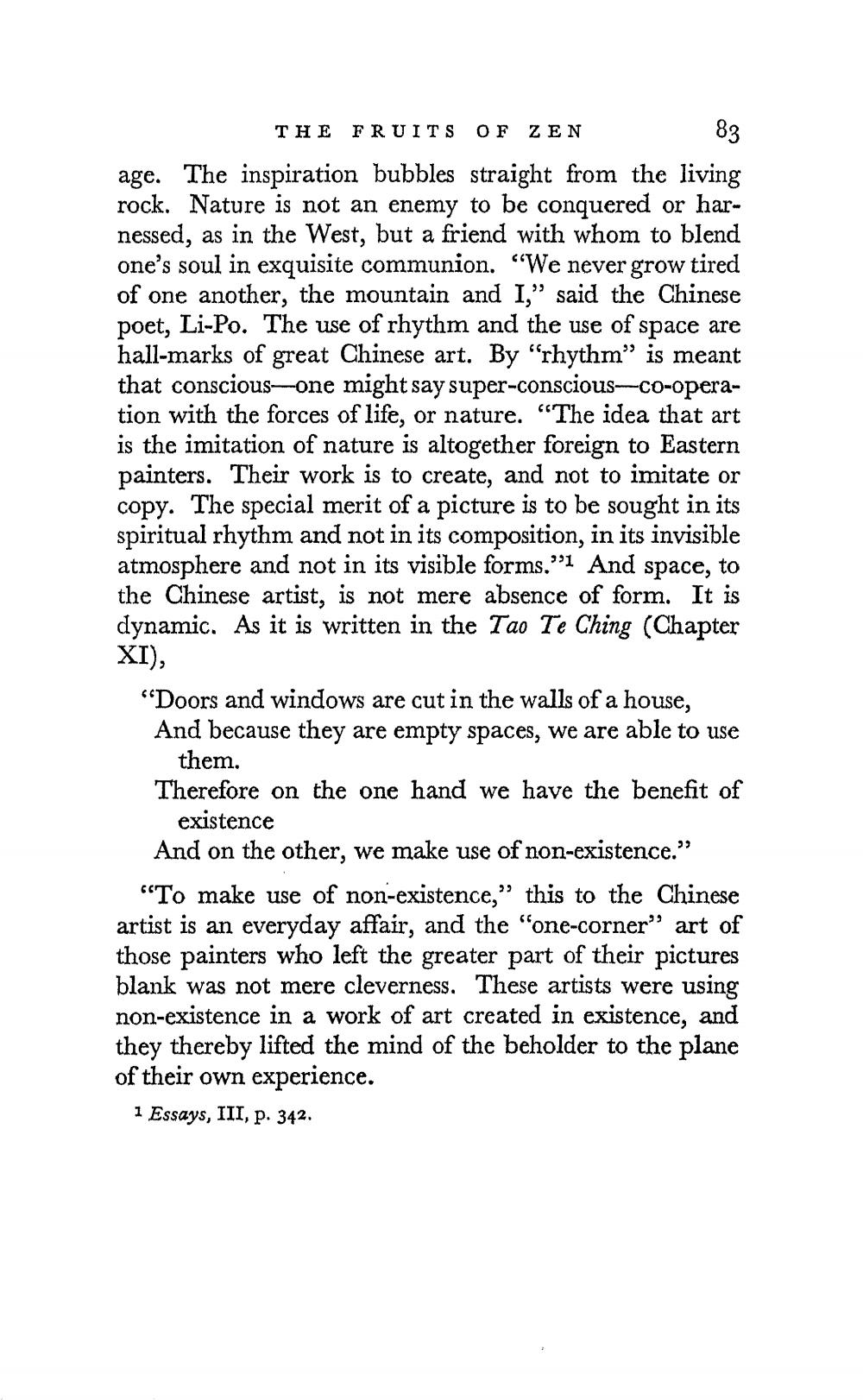________________
83
THE FRUITS OF ZEN age. The inspiration bubbles straight from the living rock. Nature is not an enemy to be conquered or harnessed, as in the West, but a friend with whom to blend one's soul in exquisite communion. “We never grow tired of one another, the mountain and I," said the Chinese poet, Li-Po. The use of rhythm and the use of space are hall-marks of great Chinese art. By "rhythm" is meant that conscious—one might say super-conscious-co-operation with the forces of life, or nature. “The idea that art is the imitation of nature is altogether foreign to Eastern painters. Their work is to create, and not to imitate or copy. The special merit of a picture is to be sought in its spiritual rhythm and not in its composition, in its invisible atmosphere and not in its visible forms."1 And space, to the Chinese artist, is not mere absence of form. It is dynamic. As it is written in the Tao Te Ching (Chapter XI), “Doors and windows are cut in the walls of a house, And because they are empty spaces, we are able to use
them. Therefore on the one hand we have the benefit of
existence And on the other, we make use of non-existence." "To make use of non-existence," this to the Chinese artist is an everyday affair, and the "one-corner” art of those painters who left the greater part of their pictures blank was not mere cleverness. These artists were using non-existence in a work of art created in existence, and they thereby lifted the mind of the beholder to the plane of their own experience.
1 Essays, III, p. 342.




